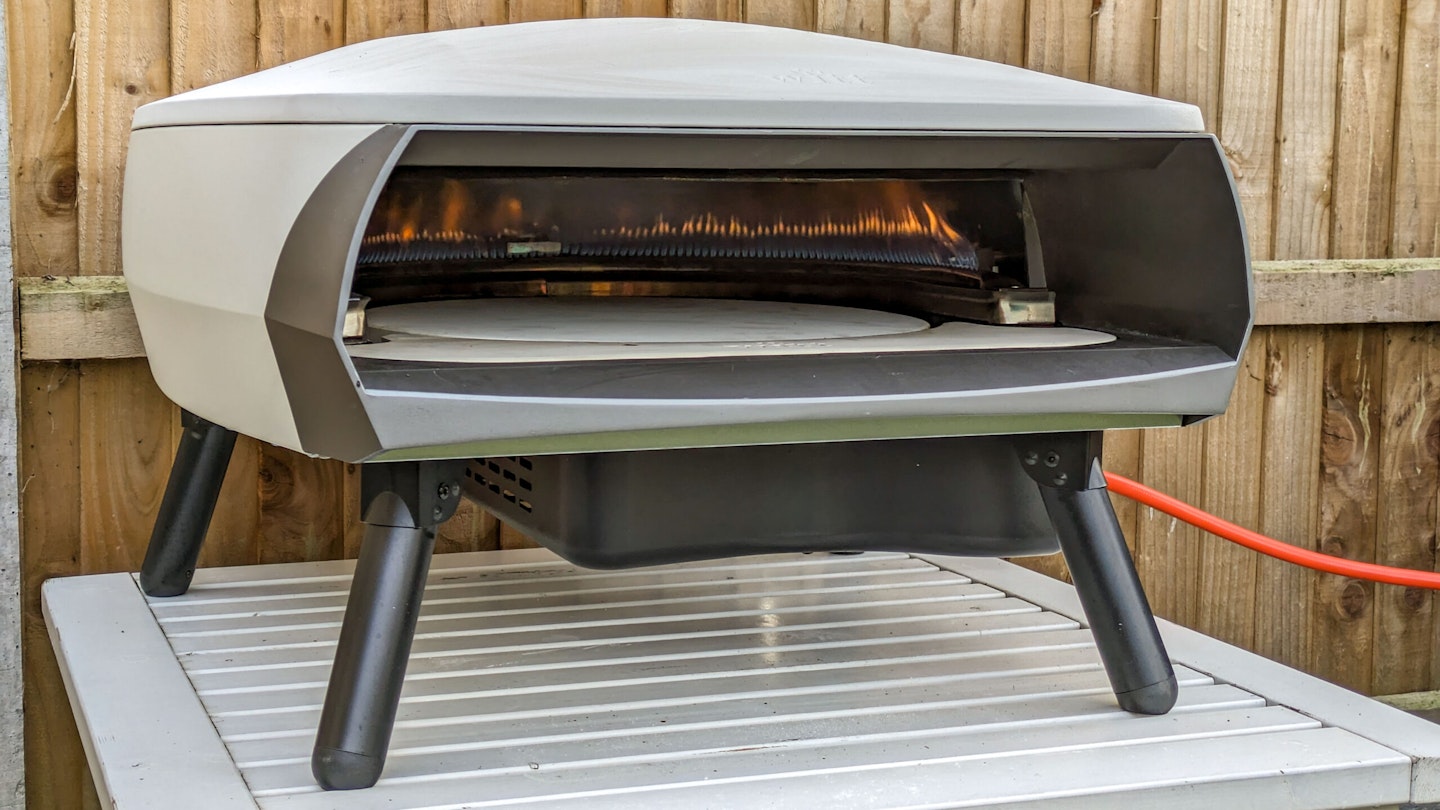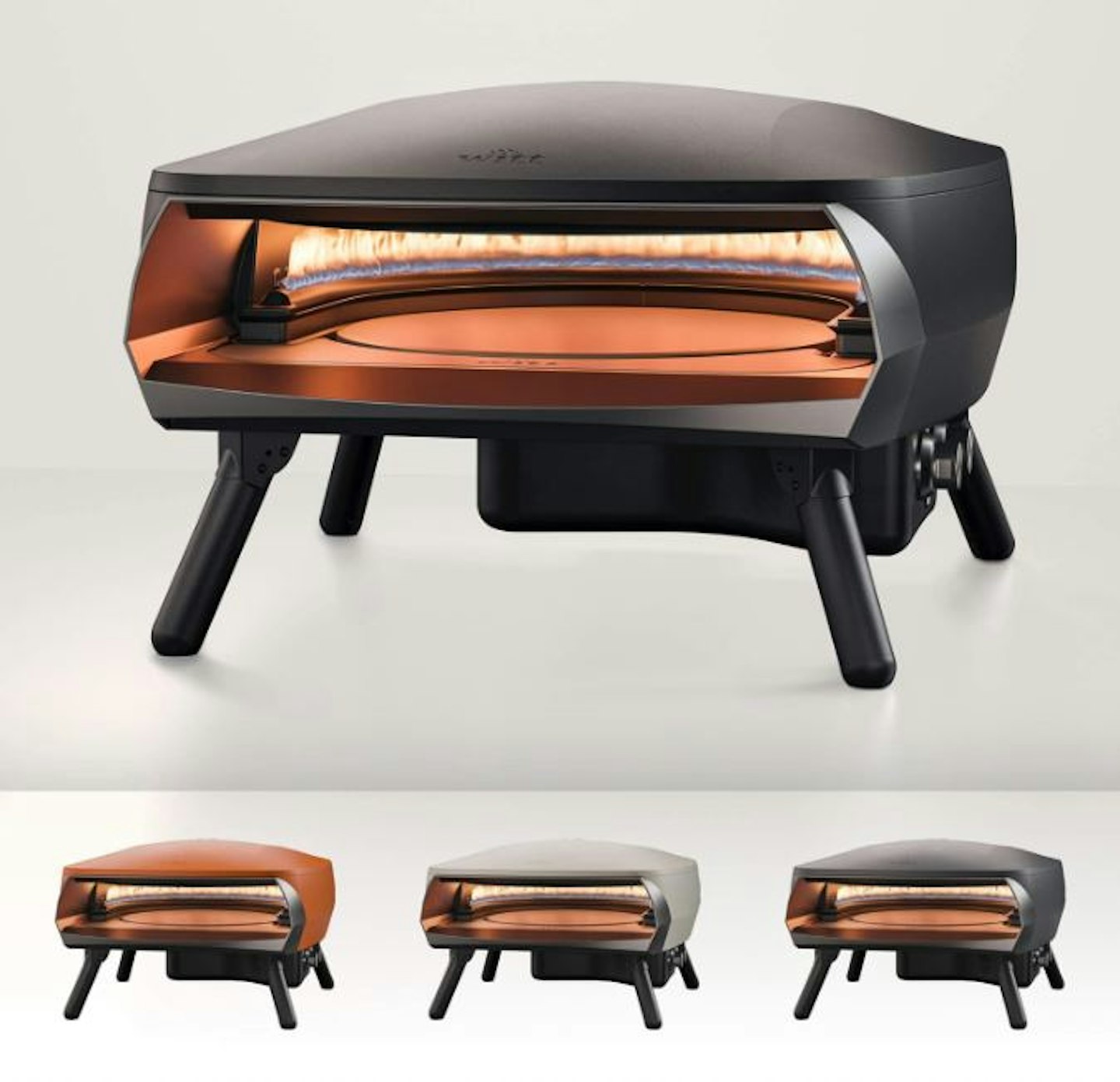Making pizza is one of the most deceptively difficult culinary tasks, everywhere you look, there are potential pitfalls just waiting to trip you up. The Witt Etna Rotante pizza oven has a series of innovations aimed at elevating your efforts from doughy disaster to soft and crunchy success, the most eye-catching of which being a rotating pizza stone.
Yes, the inside of this oven spins like the plate in a microwave, so once your pizza is loaded up in the centre, a small motor ensures it cooks evenly all the way around for perfect results. There’s also a second burner underneath the stone to help it build and retain heat.
Thing is, the ancient wood-fired brick ovens of Naples or Rome have neither of these features and still produce pizza that you or I could only dream of. So is the Witt Etna Rotante and its revolving stone worth the dough?
Witt Etna Rotante Pizza Oven overview
Pros
- Reliable, brilliant results
- Looks great
- Easy to use
Cons
- Large and heavy
The quick version
The Witt Etna Rotante is an absolutely brilliant pizza oven, regardless of its ability to spin your pizza like a 1990s house DJ. The u-shaped burner and booster under the stone itself enable endless temperature adjustability and a super-fast warm-up time, as well as searing heat to rival a wood oven.
It’s not foolproof – no pizza oven is – but it’s about as close as you can get, delivering exceptional results time after time.
Whether or not you want to cook 16-inch pizzas, the extra real estate inside the oven makes launching and retrieving smaller ones much less stressful. Just make sure you’ve got enough room for it in your garden – that extra interior space means it’s got a big footprint.
It also looks stunning, not always a key factor in outdoor cooking equipment but one that sets it apart from its more industrial, plain metal rivals. A potential deciding factor for some, especially if your garden has a strong design aesthetic.
Build
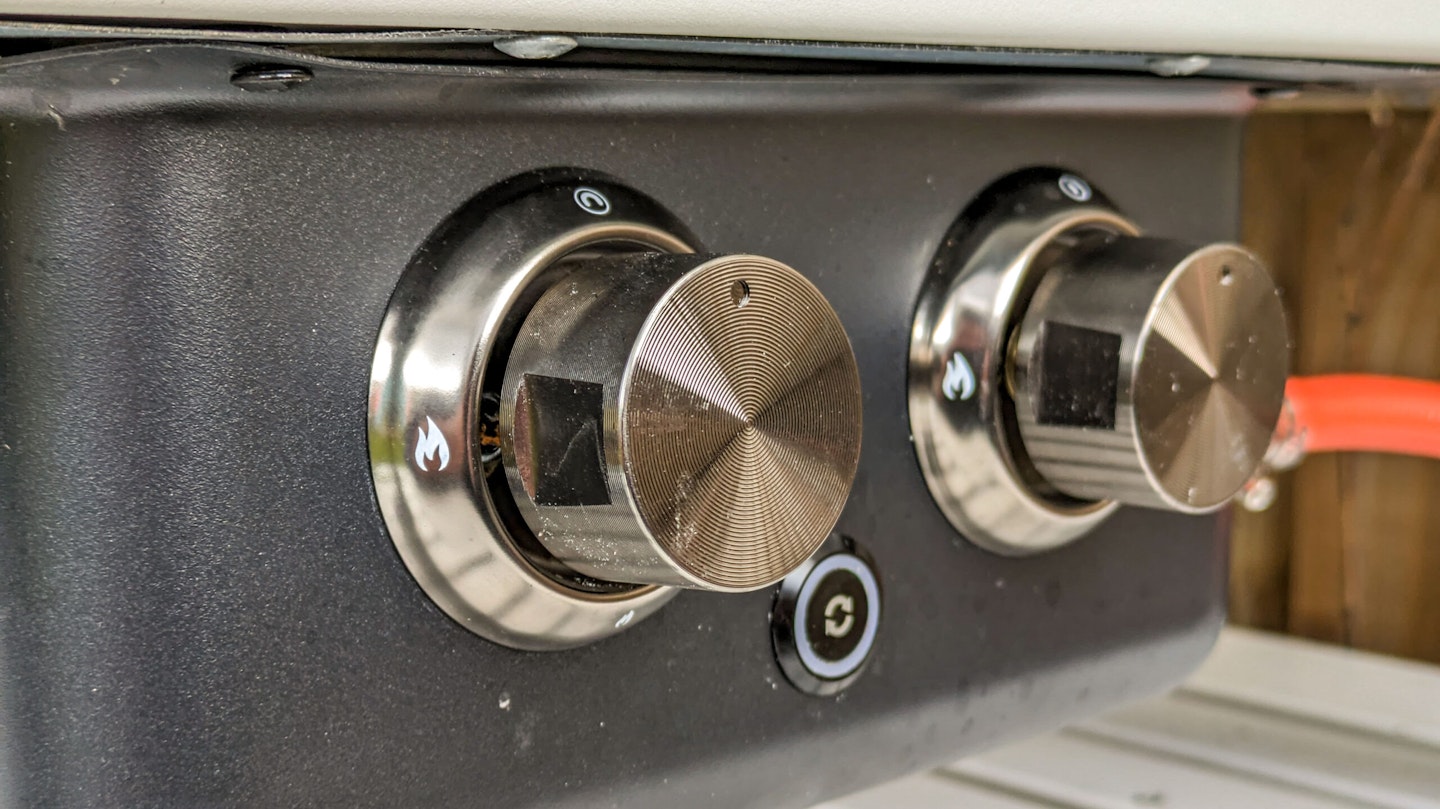
Quite refreshingly, the Witt Etna Rotante arrived fully constructed, which does, of course, mean it came in a colossal, heavy box - the oven weighs 38kg. Getting the thing out proved reasonably awkward, so I’d recommend drafting in a friend to help – the pizza stones were well packaged inside, but the fear of dropping one and cracking it before I’d even had a chance to use it loomed large.
You can use the Etna Rotante on a tabletop or buy a special stand for it, but either way, you need a semi-permanent home for it because it’s not exactly portable. I already had a square garden table to perch it on, and once in place with stones installed, it is a formidable-looking bit of kit – I would definitely recommend looking at the dimensions to make sure it will fit in your garden first.
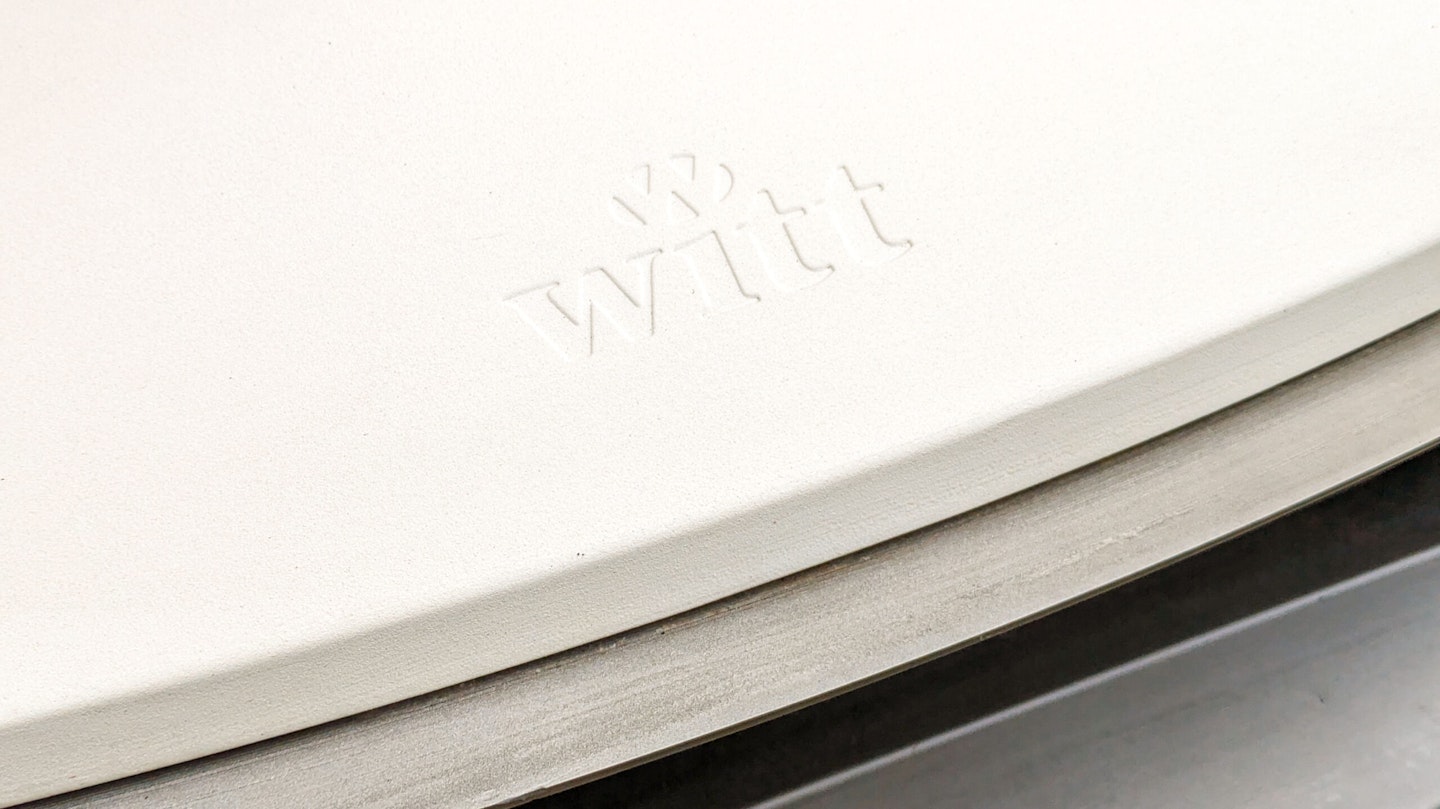
I installed the four batteries for the rotating motor (you can also plug it into the mains), hooked up a gas bottle and held down the ignition button to give the oven its first run. Nothing happened. Puzzled, I checked the batteries were the right way round and the tap on the regulator was on, but still nothing.
It turns out the ignition system has its own battery, which you must install before the oven will work. I would have known this if I’d read the instructions. Oops. Once this problem was sorted, the Etna fired up quickly and without drama.
The control knobs have a heavy, well-oiled action that feels as substantial as the rest of the oven. There’s a matte paint finish on the top of it that so far has been impervious to scratches and dents, too. It’s also worth pointing out there’s a second C-shaped stone at the entrance to the oven that acts as a buffer between the cooking surface and the outside world.
Usability

With the u-shaped burner on full power, the flames roll over the ceiling of the oven to cook the toppings, and there’s a separate burner under the stone itself to help build and retain heat under the pizza. Witt says you can get 500 degrees C in 15 minutes – it’s been taking a little longer for me, but I have been testing it in the depths of winter.
The opening is wide, and there’s enough space inside there for a 16-inch pizza, or realistically more than enough room for a 12-inch pizza - In reality, that’s the biggest size most of us amateur pizzaiolos are going to attempt. You will need a pizza peel with a decent handle to launch them, though – I’ve muddled by with a sheet pan in the past, but this simply won’t go far enough into the Etna.
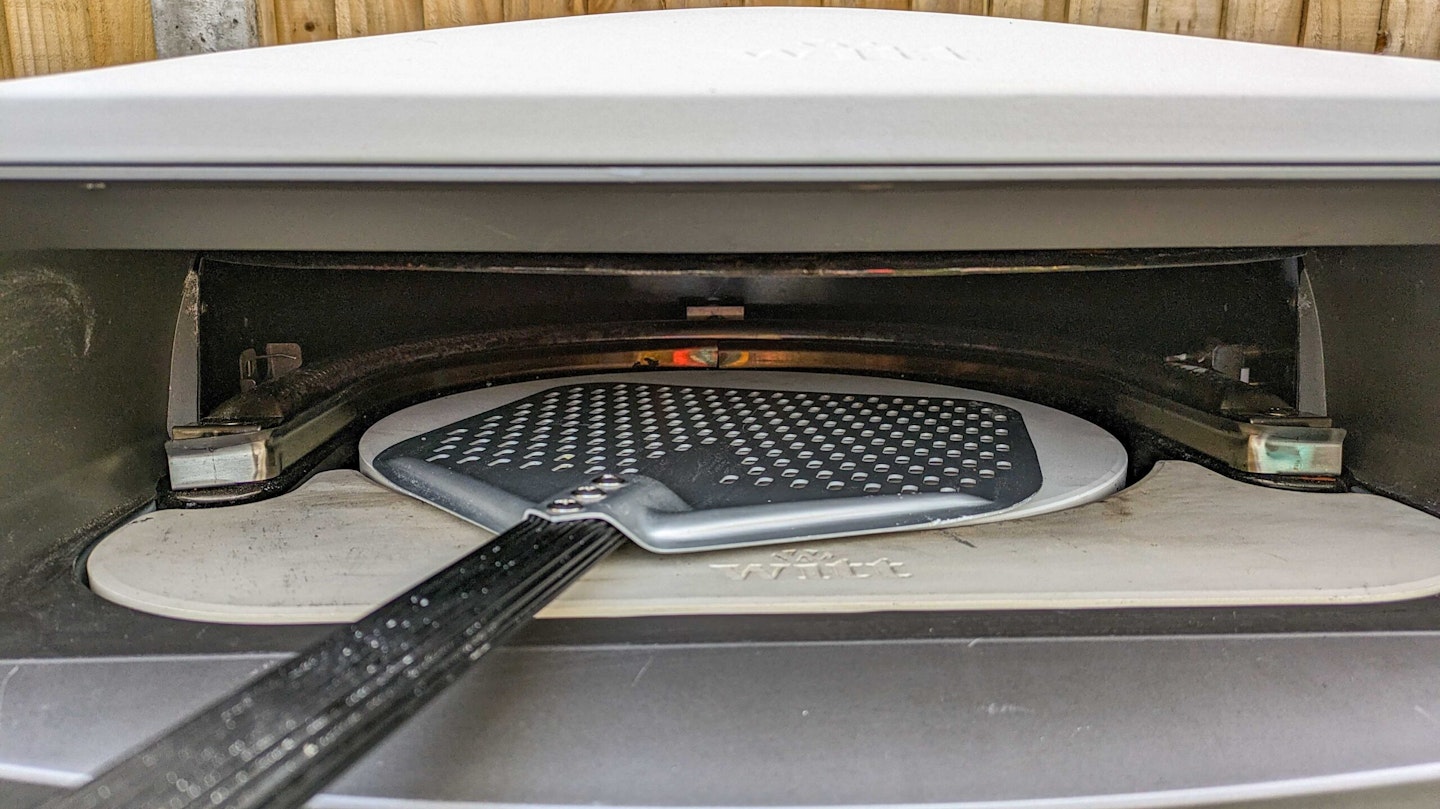
On smaller ovens I’ve used, the opening and interior space is too tight to spin the pizza round on the large peel you use to launch it, so you end up having to buy and store one of the smaller round turning peels too. I’m not presenting this as a value-for-money argument for the Etna Rotante, but once you’ve got the pizza in the right spot, you just turn the motor on, and it does the rest, no need for extra kit.
In the past, I’ve found the timing of when to rotate a pizza quite stressful – leave it in seconds too long, and you end up with a charcoal crust – so the calculations that went into the Etna Rotante’s motor speed must have been intense. Needless to say, it spins at the perfect speed to cook the dough and toppings all the way round.
Performance
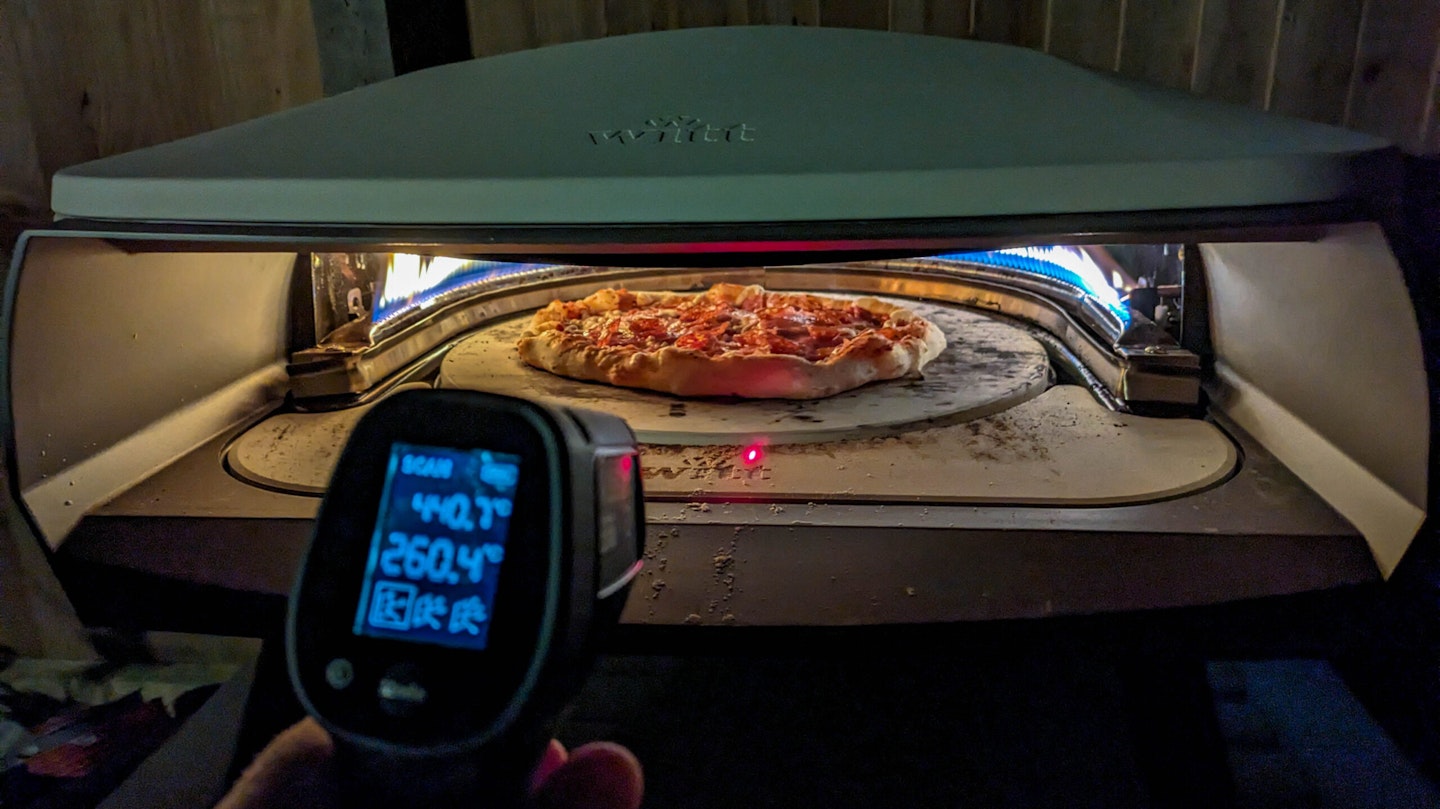
Once up to temperature, I’ve found the Goldilocks zone to be about 400-450 degrees C, which requires dialling the two knobs back a bit. There’s no temperature dial on the oven itself, but then again, I’ve found these hilariously inaccurate on alfresco dining tech in the past, so you’re better off getting a laser thermometer anyway.
I really rate the Bosch UniversalTemp and keep finding more uses for it, whether it’s for pizza or on my cast-iron flat top when making pancakes or smash burgers, this is a super useful gadget that takes the guesswork out of cooking.
So far, I’ve attempted high-hydration Neapolitan-style dough with lots of toppings – if you were cooking a thinner crust with only a few ingredients on top, you could probably get away with a much higher temperature on the base burner, but I’ve found it’s a balance of getting the cheese melted and the toppings charred versus not burning the bottom.

You do need to make sure you launch the pizza as close to the middle of the stone as possible. This sounds obvious, but if it’s slightly off-centre, you’ll end up with one side of the pizza cooked more than the other, even with the stone rotating.
It’s a bit tricky to tell when the burner under the stone is lit because you can’t see it. The best thing to do is light that one first so you can hear it catch before lighting the main burner. The fact the latter is u-shaped and not just at the back of the oven makes a huge difference to the speed and evenness that it cooks the pizza, and the burner itself produces a consistent flame all the way round.
So to answer that initial question, is the motorised stone a gimmick or genuinely useful? You’ll have probably guessed by now that my opinion is definitely the latter – rotating a pizza in a 500-degree oven is nowhere near as easy as it sounds or looks, and full of potential disasters like pushing it into the burner or getting it stuck on the roof of the oven, or simply trying to lift it too early and folding the thing in half.
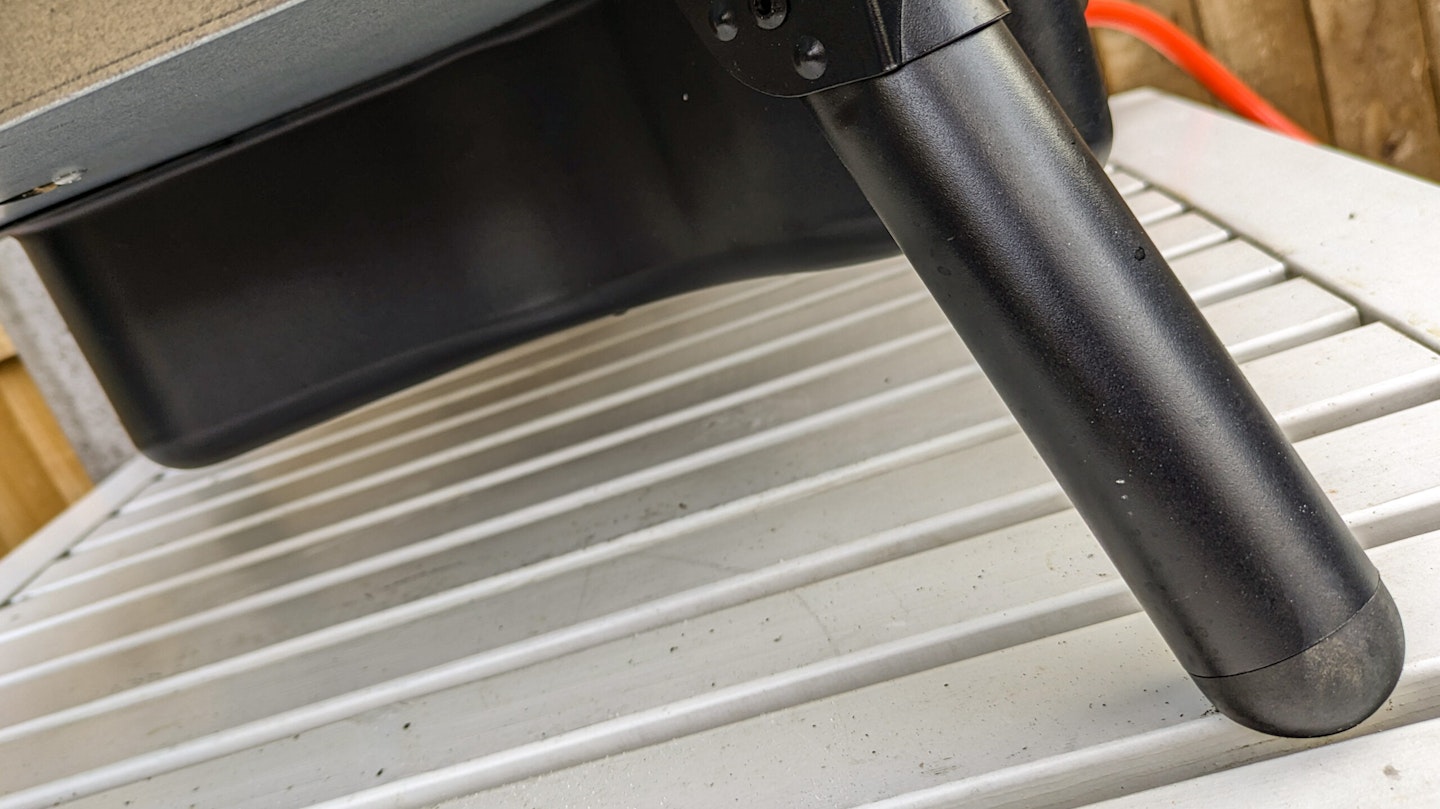
I have done all of these and while there’s an element of satisfaction to finally mastering this skill, it comes at the end of a road paved with inedible pizza. I know plenty of people who have bought other ovens, had a series of failures, and then given up. The Etna Rotante is expensive but its consistency means it’s very unlikely to find itself buried at the back of the shed.
It’s a shame you can’t run it on gas or wood pellets, though, like Ooni Koda 16 – if you want that authentic wood smoke flavour, then you’ll have to look elsewhere, and that seems a bit of a shame.
Price and competition
In truth, there’s not much out there that does the same job as the Witt Etna Rotante so it’s hard to talk about direct rivals. Recently the Morsø Forno Spin gas pizza oven has been launched for £469, which features a rotating stone but is smaller than the Etna.
Its closest spec competitor in terms of size is the Ooni Koda 16 Gas Powered Pizza Oven – this has a static stone but does boast an L-shaped burner, so you don’t have to turn your pizza it as often. It’s also a bit cheaper at £499.
The Witt is £699, and with this budget, you can get the multi-fuel version of the Ooni Karu 16 (although if you want to use gas, you have to spend another £99 on a burner), so if wood smoke taste is more important than a spinning base, this could be an option too.
Also worth pointing out at this point is that the Enta Rotante doesn’t come with any accessories, so budget another £50 or so for a peel and thermometer.

Final verdict: Is the Witt Etna Rotante Pizza Oven worth it?
At this point, you might be thinking the Etna is a pricey bit of kit, but it packs so many genuinely useful features into such a smartly designed box I actually think it’s good value for money. Plus, you'll save a fortune in takeaways.
That’s because the rotating stone, u-shaped burner and interior space mean it’s (almost) foolproof, and so you’ll end up using it a lot more than an oven half its price.
If you're serious about pizza making (and it does quickly become an obsession), the Witt Enta Rotante is a reliable ally in your quest for the perfect crust.
Pros
- Reliable, brilliant results
- Looks great
- Easy to use
Cons
- Large and heavy
Who tested it?
Adam Binnie is a barbecue and outdoor cooking expert who has been feverishly attempting to recreate Neapolitan pizza at home for about ten years, testing barbecue mounted ovens, standalone units, and even a method using a hot frying pan and grill that would enrage pizza traditionalists (but works brilliantly).
How the product was tested
I have tested the Witt Etna Rotante in my garden regularly for three months so far, using homemade and hand-stretched dough and a perforated peel to launch them. I’ve mostly stuck to high-hydration bases but will update this article with the results of different pizza styles, including New York, Roman and Chicago deep dish.
What to read next:
Ooni Karu 12 pizza oven review: portable and versatile with delicious results
DeliVita Pizza Oven review: a beautifully crafted wood-fired kiln that’s built to last
Gozney Dome Pizza Oven review: a stylish multi-fuel cooking machine
Subscribe to Modern Gardens magazine and get the most out of your outdoor space. Discover everything you need to know to make your outside space look fantastic, quickly and easily, with hundreds of simple ideas, designer tricks, affordable products and expert advice in every issue of Modern Gardens. View our latest subscription offers to save on shop prices.
Adam Binnie is the Affiliate Operations Editor and reviewer for Modern Gardens, specialising in bikes, fitness, cars, parenting and cooking.
